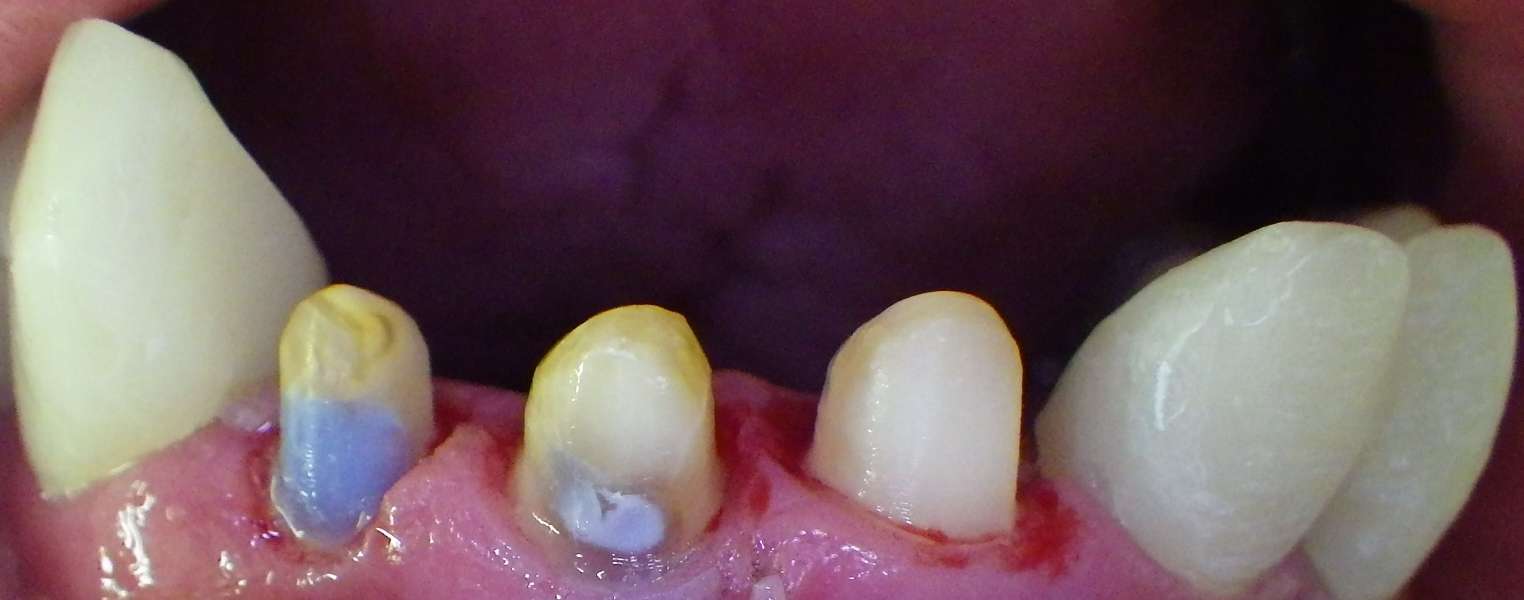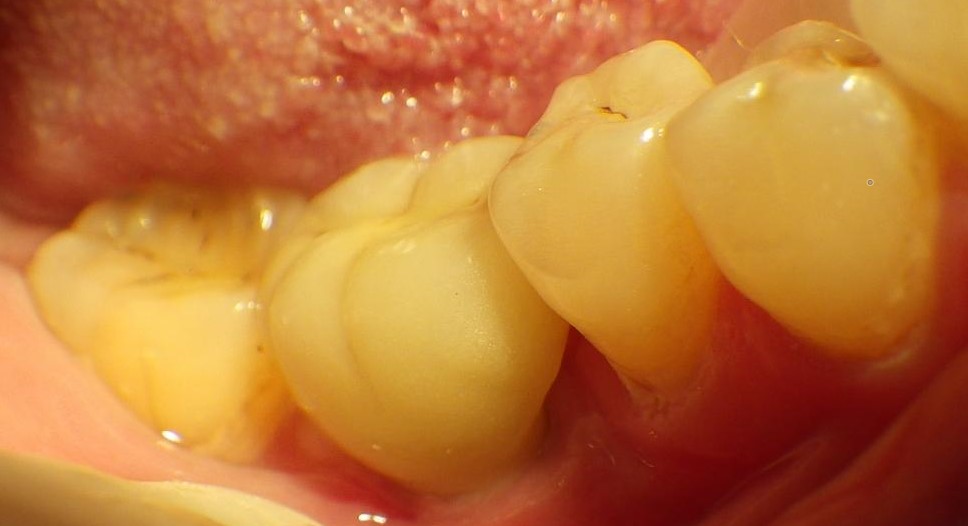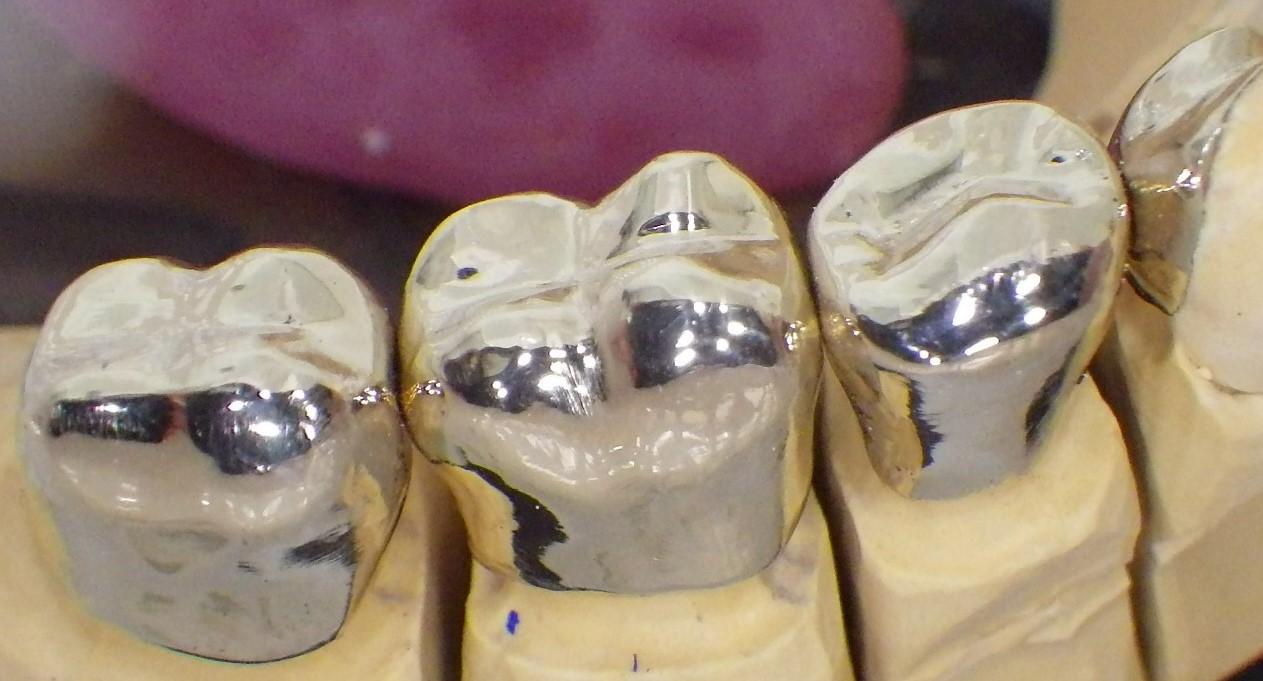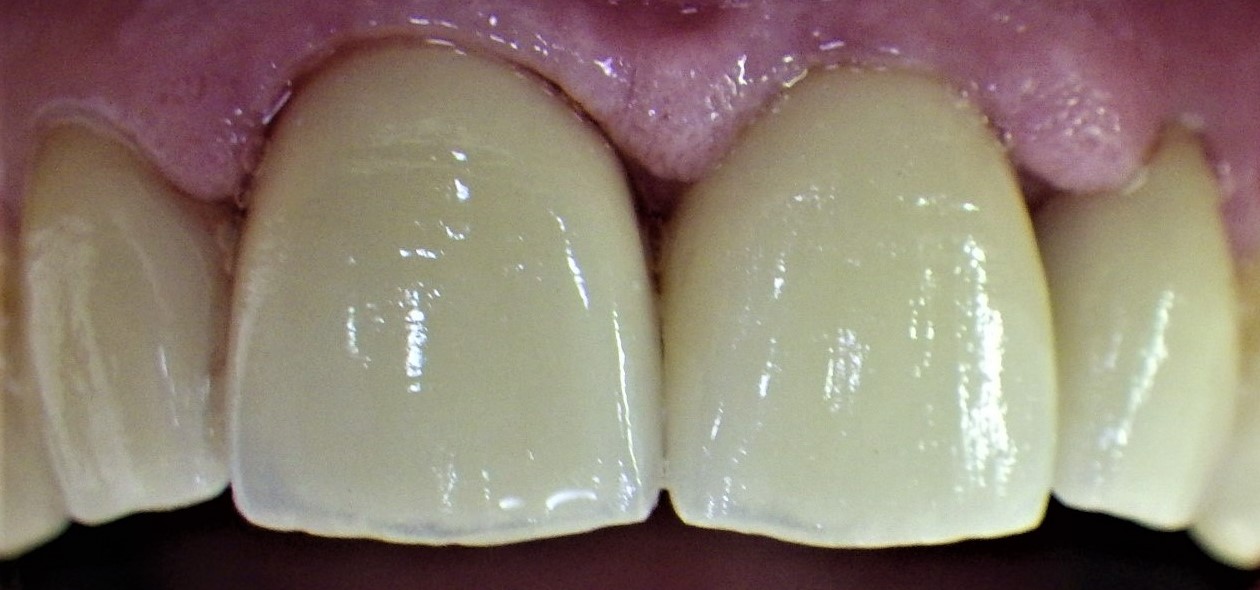Crowns
Crowns
Partial crowns or full crowns replace the outer layer of teeth, at least the enamel section, but also often to some extent large areas of dentine. If they are mainly fabricated for replacing lost tooth structure (tooth conservation), they can be considered a part of conservative dentistry but they often function as a component of restorations.
Crowns can be fitted on natural teeth (preparation) or the intraoral sections and abutments of implants. Crowns are retained by cementation and/or adhesion; it is also possible to fabricate screw-retained restorations on abutments. The long-term seal of the crown margin (marginal integrity) is very important for maintaining the health of the surrounding marginal periodontium and prevention of secondary caries.
 Anterior crown preparations
Anterior crown preparations
 Implant-borne metal-ceramic crown
Implant-borne metal-ceramic crown
Crowns are fabricated using a single material (full cast crown, all-ceramic crown) or by the combination of different materials (e.g. bonded crown). Very different procedures are used for this, e.g. casting (cast crown), milling, trimming, sintering (CAD-CAM), pressing (press-ceramic crown) or electroforming (electroformed crown). With a metal-ceramic crown a coping (framework) is first fabricated using metal and then coated with ceramic (veneered) to achieve optical similarity with the tooth. Historical techniques include soldering of crown parts (banded crowns).
 Three metal full cast crowns
Three metal full cast crowns
Prefabricated steel crowns can be used for treating severely destroyed deciduous teeth. Temporary (short, medium or long-term) custom-adapted prefabricated, frequently intraorally (direct) or extraorally fabricated temporary crowns (mainly using resins) bridge the period until a permanent crown is fitted.
Crowns fulfil various functions. As protective crowns they absorb masticatory forces to prevent teeth with weakened structures breaking apart and/or seal endodontically treated teeth against penetration of bacteria. They also protect the tooth against chemical and thermal irritation.
Anchor or abutment crowns retain bridges whereas support crowns anchor retentive and support elements such as rests and clasps. Connectors, e.g. attachments can also be integrated into the crown (attachment crowns).
Crowns can be fabricated individually (single crowns) or connected with other crowns (splinted crowns).
 Upper anterior crowns
Upper anterior crowns
In the specific case of the telescope crown (conical telescope crown, parallel telescope crown) the crown consists of a fixed inner crown (primary crown) and an outer crown (secondary crown), which fits on the primary crown in the removable restoration. If a telescope crown is fabricated using the electroforming technique, it can be adhesively retained later in a tertiary crown fabricated over it.
PROBIEREN SIE ES EINFACH AUS !!!
Von uns erhalten Sie professionelle Unterstützung.
Treten Sie mit uns in Kontakt oder nutzen Sie unser Kontaktformular.
Wort des Tages
| Deutsch | Englisch |
|---|---|
| Abwinklung | angle, angulation |
Schwerpunkttext des Monats
Vergrößernde Optik in der Zahntechnik Vergrößernde Optik in der Zahntechnik |
